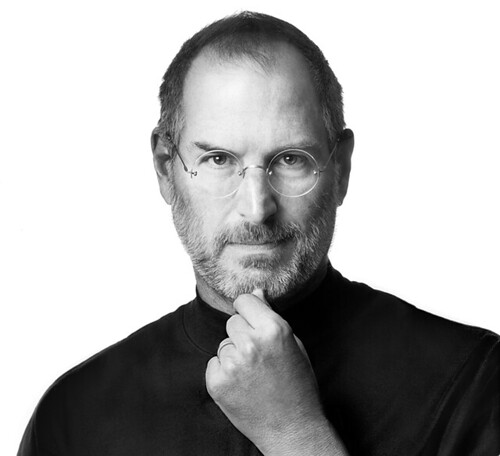Fry's Planet Word - The inimitable Stephen Fry provides expert curation on language and the written word across the world that has driven communication. If you have not already seen it, I do recommend you take the time to watch.
The series provides fascinating insight into the evolutionary (and revolutionary) characterisation of language and the essential development of the written word that supports interaction, engagement and technology. Without it, we would not be where we are today.
In last night's programme, "Stephen discovers the earliest writing - cuneiform - at the British Museum, and learns how our alphabet came from the Phoenicians. As part of his exploration of the diversity of scripts, Stephen visits 106-year-old Mr Zhou, the inventor of the Chinese phonetic writing system called Pinyin, who relates how literacy increased four-fold after its introduction under Mao.
After the written word came the printed word, and Stephen looks at how this has shaped our relationship with writing, giving us libraries, dictionaries and encyclopaedias. From the Bodleian to Diderot's favourite café to the cutting-edge research at MIT, Stephen explores how the written word evolved into printing, then libraries, encyclopaedias and computer code. Blogging and twittering is just the tip of a brave new future which no one dares predict."
There are echoes of Steve Jobs' passionate story about taking calligraphy classes upon dropping out of college, which retrospectively turned out to be a 'connecting dot', introducing multiple typefaces and proportionately spaced fonts to the Apple Mac.
Stephen Fry has carved his niche as an expert wordsmith and an influential voice on Twitter. He curates the programme with a down-to-earth raw passion that cannot help but draw you in. Watch Stephen Fry's Planet Word on BBC iPlayer.
RELATED LINKS:
Cx3 blog entry: Steve Jobs
Cx3 blog entry: Why follow a celebrity?
Cx3 blog entry: Twitter, Stephen Fry and Halibut
Monday, 17 October 2011
Thursday, 13 October 2011
Cx3: Transmedia storytelling

I'm always impressed by the collaborative infographics created by Brian Solis and JESS3...and the 'Social Media Brandsphere' is no exception. It illustrates a transmedia approach to storytelling connecting brands with audience groups spanning five media landscapes:
"Social networks and channels present brands with a broad array of media opportunities to engage customers and those who influence them. Each channel offers a unique formula for engagement where brands become stories and people become storytellers. Using a transmedia approach, the brand story can connect with customers differently accross each medium, creating a deeper, more enriching experience. Transmedia story telling doesn't follow the traditional rules of publishing: it caters to customers where they connect and folds them into the narrative. In any given network, brands can invest in digital assets that span five media landscapes.
1. Paid: Digital advertising, banners, adwords, overlays
2. Owned: Created assets, custom content
3. Earned: Brand-related conversations and user-generated content
4. Promoted: In-stream or social paid promotion vehicles
5. Shared: Open platforms or communities where customers co-create and collaborate with brands
Any combination of the five media strategies defines a new Brandsphere where organisations can capture attention, steer online experiences, spark conversations and word-of-mouth, and help customers address challenges or create new opportunities. Each media channel connects differently with people and thus requires a dedicated approach integrating tangible or intangible value. Doing so ensures a critical path for social media content: relevance, reach and resonance."
Visit www.theconversationprism.com for more on this and other infographics in this series.
RELATED LINKS:
Cx3 blog entry: Social Media Content Grid
Cx3 blog entry: Conversation prism 2.0
Saturday, 8 October 2011
Cx3: Steve Jobs

A while since my last post, but the demonstrable influence of Steve Job's death has reignited my Cx3 blog posts - and in tribute, written and posted in totality using my iPad.
In the past few days, since Steve Jobs died, there has been an unprecedented global outpouring of grief, tributes and reflection. He is labelled a genius in parallel with Einstein and labelled the creator of the 21st century.
Steve Job's Apple empire touches the world, quite literally, as it shapes the way we behave and communicate today - providing platforms to connect, share, inform, inspire, influence, educate, perform and entertain.
I myself (as did many others) found out about Steve Jobs death via my iPhone and actively shared the news appropriately - via my iPhone, which can only be a fitting tribute to a man who revolutionised communication. Twitter recorded 10,000 tweets per second on news of his death - the highest ever.
Clips of Steve Jobs were shared including his Commencement speech at Stanford University 'How to live before you die' and multiple i-product launch performances, which have a presentation style of their own. The 'opportunity in death' that Steve Jobs actively talks about, provides the world with the opportunity to 'save to memory' recognition of a man's leadership genius, and a not-to-be-forgotten creative visionary.
